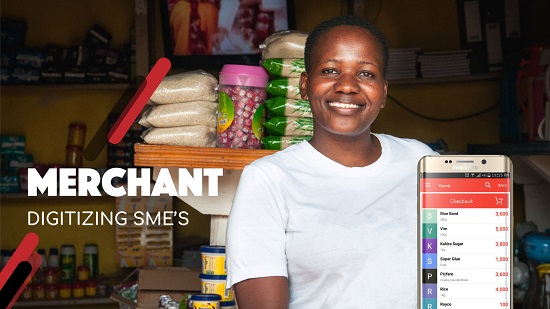In May of this year, ChapChap Africa unveiled new features they had added to their flagship product, the ChapChap Merchant application.
With the new features, ChapChap Africa wanted to reinforce how SMEs were using their application to digitally manage their businesses while easing the purchasing process for the customer.
The IT company has been developing software solutions for two years, and the company Chief Executive Officer Emmanuel Emodek says they are targeting “underserved communities” mainly.
In the past few months, Uganda has undergone an extensive digital transformation.
Most of these changes have struck the vast majority of the populace unprepared, prompting a shockwave and erratic resistance.
Though the government has reconsidered some of the policies, it has, for the most part, assured Ugandans that the digital disruption must happen.
Can the ‘unfair’ policies be avoided?
When the government introduced the mobile money tax, it initially affected all transactions.
After the public uproar, President Yoweri Museveni suspended the taxing of deposits and sending money, maintaining a 0.5% tax for a person withdrawing money.
Read: Govt to tax only mobile money withdraws; OTT levies retained
This implies that when someone sends you Shs50,000, you’ll pay a tax of Shs250, pay another Shs1500 to the mobile money agent.
Remember the person sending you that money was also charged Sh1000.
How ChapChap Merchant comes in
An overwhelming percentage of the Ugandan population shops for themselves.
The shopping can either be at a supermarket or at a shop near your residence.
Now, imagine you are at the office and you want to send money to your children or anyone to do shopping for the house.
Going back to the figures above, if you had a 50-thousand note, after factoring in the charges, you’ll be left with Shs4745o.
The figure increases with the value of the money you are to use and how many times you need to send money.
But with the ChapChap Merchant app, you’ll only be charged the standard Mobile Money fee telcos charge when you are paying for goods and services. In this case, it is just Shs550.
You can calculate how much you would have saved.
The app is designed to be used by anyone selling any product in Uganda. It’s available for merchants using Android-powered phones.
When you visit the shop, hotel, bar, you’ll tell the attendant all the products you need.
They are already listed on the app by the merchant, so they just pile what you need in your virtual cart and then a sum you need to pay will be automatically generated.
The merchant will then ask for your number so that he initiates a transaction which you’ll complete after receiving a notification asking you to pay via mobile money.
See also: Beyond a dream: Qwicart steadily working out Uganda’s online shopping revolution
You don’t necessarily have to visit the shop to do this. If it’s a shopkeeper you know, then you just phone them up, they do everything and you just send someone to pick the items.
How is it different from online shopping apps?
Some of the steps up there might lead you to think that the app was developed for online shopping.
While it’s true that you can buy goods and pay for services using the gateway, it’s not the driving factor.
The app is essentially to help owners of small and medium businesses to keep track of their businesses.
[ot-video][/ot-video]
There is no one who’ll give you a loan if you don’t have records showing how you manage your business, experts say.
Read: Bitature: How to convince someone to give you a million-dollar loan
And this becomes really hard for SMEs since to do this, you would need more human resource, which implies more expenditure on your business.
But with the app, all this is digitized and automated.
Features of ChapChap Merchant
The app has five main features: Mobile Point of Sale, which speeds up the sales process; Sales Recording, for recording and analyzing sales data to make informed business decisions.
There is also Inventory Management, which helps a merchant to quantify his or her stock; then the app has an E-Payment platform and another feature for tracking expenditure.
Aside from tracking their business transactions and records, merchants are also protected from thieves since they no longer have to carry cash around.
Read: ChapChap new features to enhance stock management in SMEs
For businesses that sell multiple products, you don’t have to record everything on paper to recall the prices or if you want your kids to help you run the shop: the prices are already indicated in the application.
The app also has a feature that allows scanning barcodes.
To use the application, merchants are currently being charged Shs20,000 annually.
According to Emodek, when a merchant installs the app, the company trains them, and they also have a support team in case a user needs help.
A desktop version of ChapChap Merchant is also available for big shops to cater to multiple customers.
Related:
Parliament breaks silence on paying social media tax for MPs
Uganda has the most expensive internet in East Africa – Report

